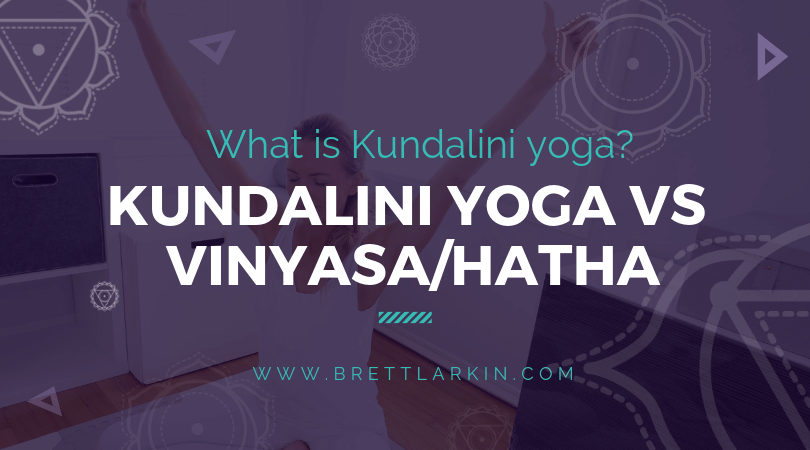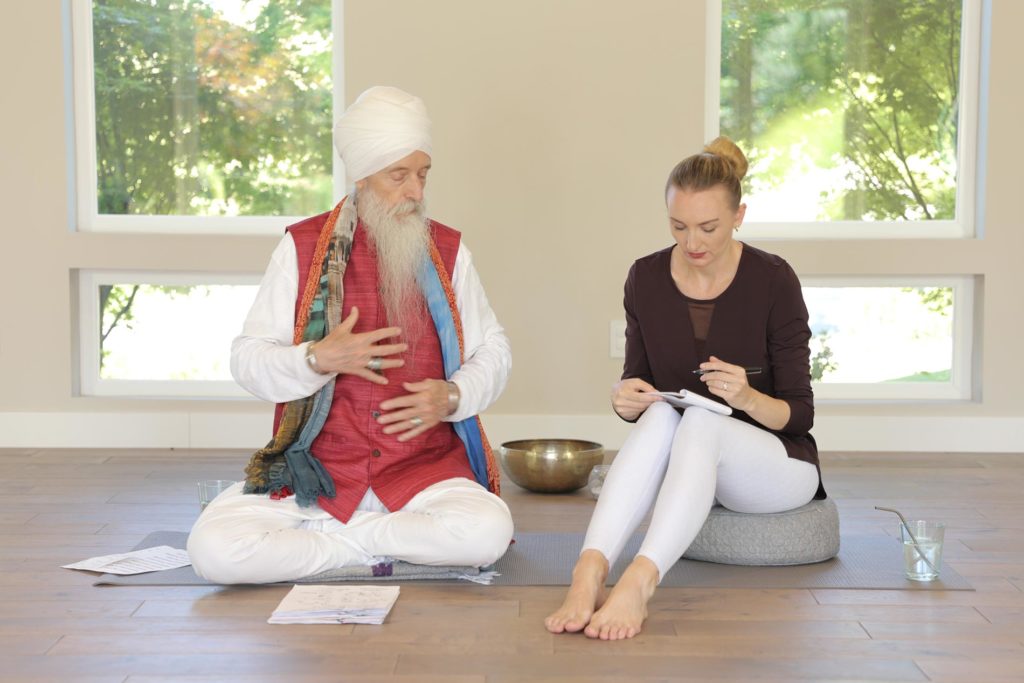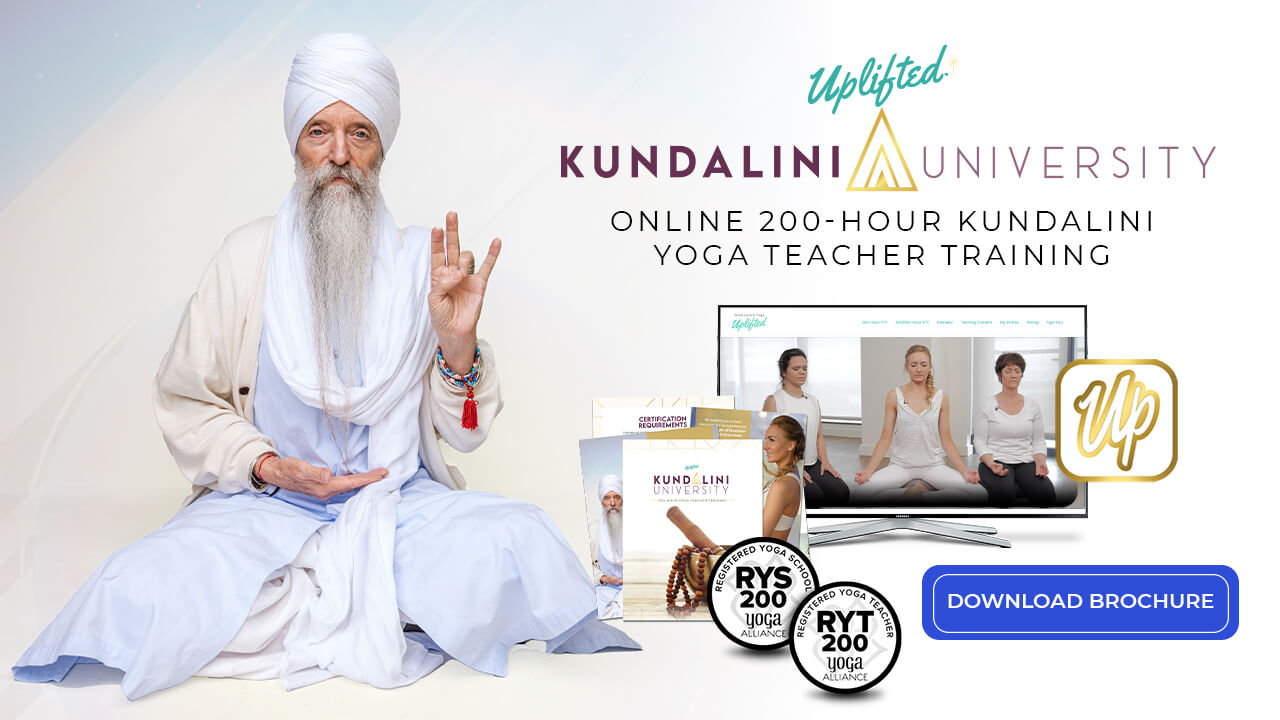Kundalini yoga is unlike any other type of yoga that you might practice. Where hatha yoga and vinyasa flow might focus on the physical exercises (asana) that yoga has to offer, Kundalini focuses on the spiritual practice of yoga.
Don’t worry, it’s not as scary as it sounds.
Unlike what western philosophies believe, eastern philosophies believe that your spiritual practice has a lot more to do with you, your consciousness, and how you experience the present moment.
And so Kundalini helps you connect with yourself and your consciousness through a set of practices (or kriyas), like meditation, mantras (like the Adi Mantra), breathing exercises, and certain postures.
This is the main idea behind Kundalini awakening. The awakening of Kundalini is basically the awakening of your own awareness and consciousness.
Pretty cool, right?
Before you begin your Kundalini process, though, take some time to understand its history, how it works, and how you can use it in your own spiritual practice.
It’s all beautiful and inspiring, making the entire Kundalini experience even more powerful.
So, are you ready? Let’s dive in.
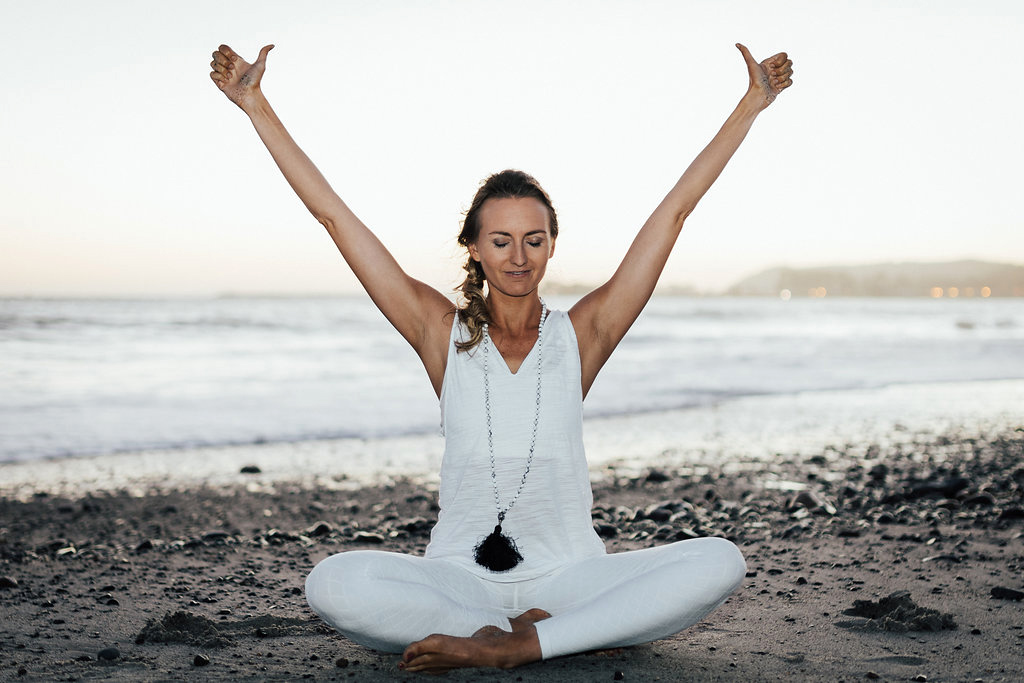
What is Kundalini?
Yoga has been around for thousands of years and is a totally different practice than what you might experience today.
In fact, it’s meant to be just as much a spiritual practice as it is a physical one (if not more). According to the eight limbs of yoga, the postures (asana) is just one aspect of yoga. The rest have to do with the spiritual stuff. All of it stems from ancient Tantric principles, which are meant to help you live your fullest life.
And by full, they mean a fully conscious life. Kundalini yoga is the practice that will help get you there. This is why it is known as the ‘yoga of awareness or consciousness’, because it gives you the exact tools needed to attain consciousness.
This is the idea behind Kundalini awakening.
Kundalini yoga is not an original form of yoga. Its origins aren’t totally clear, though Kundalini energy was referenced in the Upanishads, which is a collection of ancient Vedic texts that serve as a sort of historical account of spiritual practice in India. Kundalini yoga, as it’s understood, was almost a secretive practice that was passed on from teacher to students for years and years. It was shared as a sort of ‘body science’, where certain kriyas (or practices) helped prepare the body for the movement of energy throughout.
These teachings were eventually passed down to Yogi Bhajan, who is responsible for consolidating it into a structured practice and bringing it to the west.
Kundalini yoga as we know it today pulls on various yogic principles and mechanics together to form a comprehensive practice that would allow practitioners to not only commune with God, but to also experience the feeling of God in the mind (aka the awakening of Kundalini).
The first is Bhakti yoga, which is the practice of devotion and is why chanting is an important part of the Kundalini process. The second is Raja yoga, which is the practice of meditation, mental power, and control. The third is Shakti yoga, which is the ultimate expression of power.
Together, these three forms of yoga bring us the physical postures, deep meditation, pranayama breathing exercises, and chanting that make up Kundalini yoga.
What is Kundalini Energy?
One of the most beautiful things about Hinduism is the use of storytelling to convey an idea, feeling, or experience. And the most beautiful (and fundamental) story of all is that of Shiva and Shakti, which is where Kundalini energy comes from.
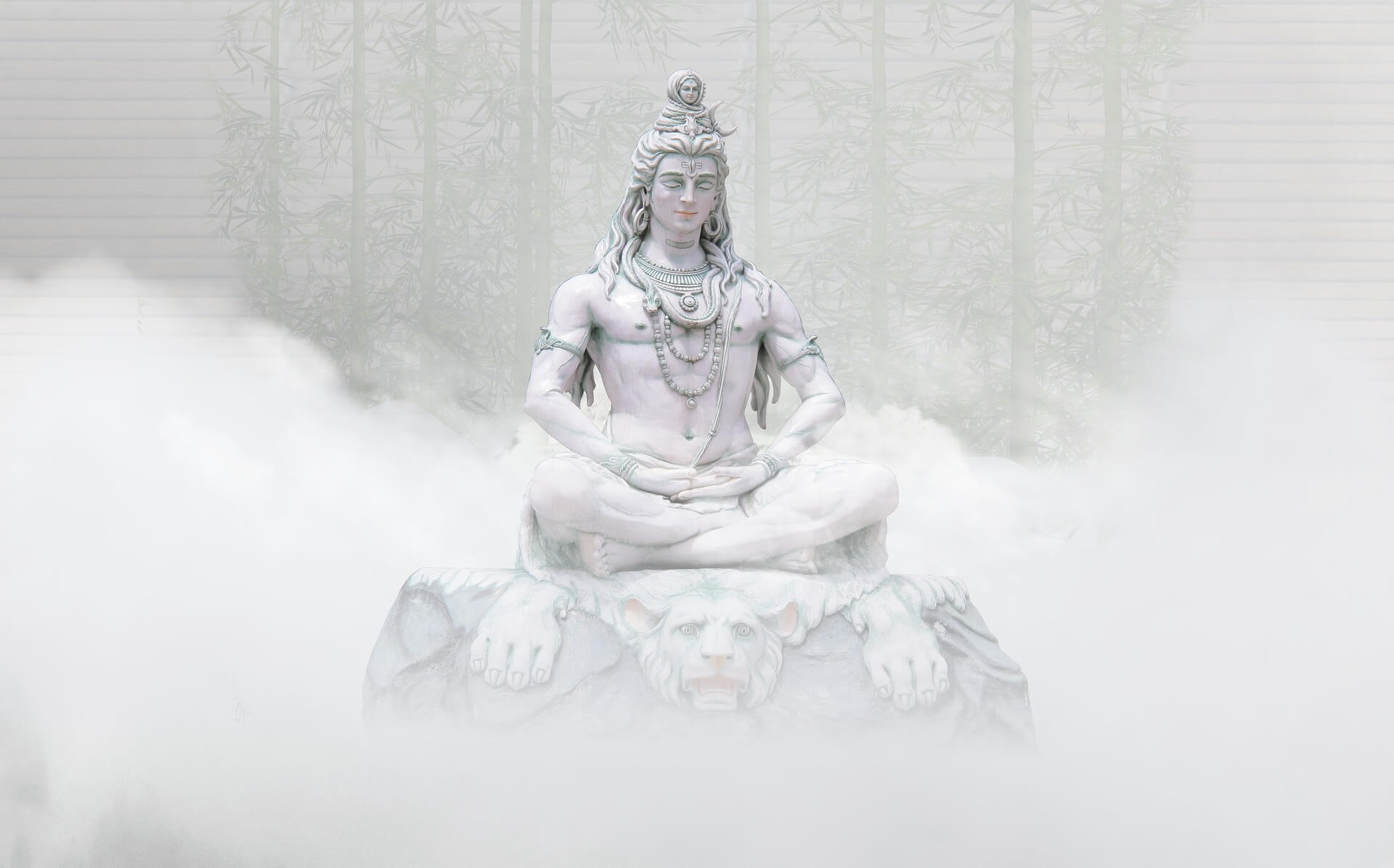
The story goes that Shiva, the all-knowing and steadfast source of power and consciousness, had been in deep meditation for thousands of years. Being the unmoving observer that he was, he sat in silent observation while Shakti, who represents divine energy, danced for him. She longed to be united with him so intensely that she continued to dance for thousands more years, in hopes of provoking Shiva to join her. She felt, in all of her longing, that the two of them belonged together.
Eventually, he does wake and joins her in a harmonious union, which is said to be how all of nature was created.
Her divine energy, with the ability to create and grow, combined with his reliable source of power and consciousness, created enough swirling energy that life formed.
This life comes from a life force energy, or prana, that had previously sat dormant, thanks to Shiva’s unmoving period of meditation. Just like a snake sits coiled around itself when it is dormant, so too does this life force energy.
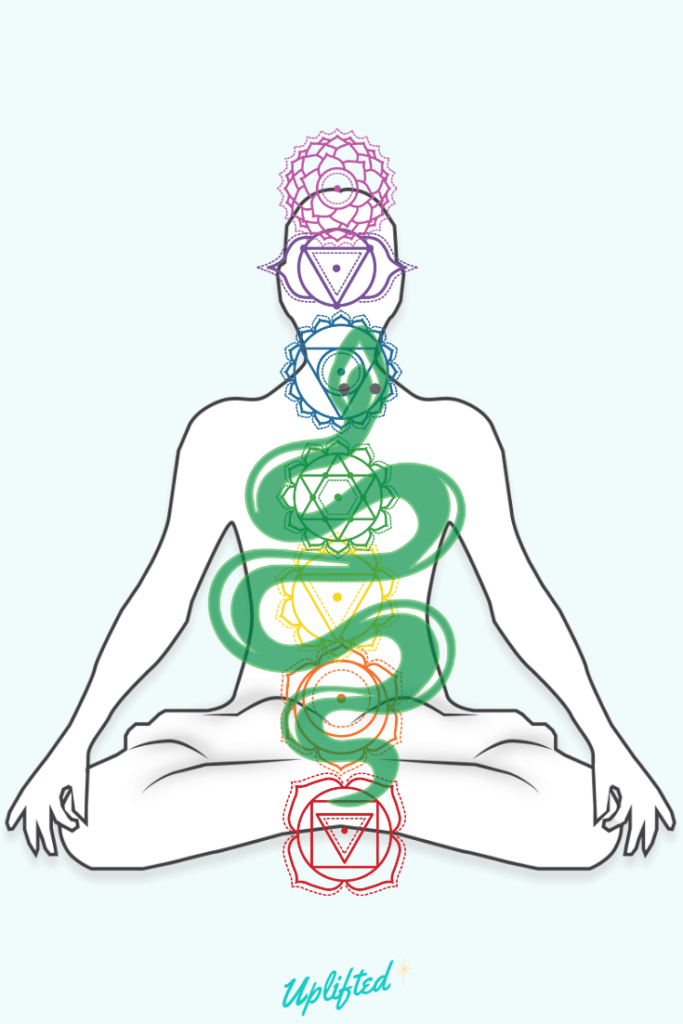
In terms of Kundalini yoga, prana sits coiled at the base of the spinal column, waiting for an awakening. Just like Shakti danced for Shiva, pulling him out of his dormancy, Kundalini yoga ‘dances’ for our dormant energy, pulling it upwards along the spinal column, eventually awakening Kundalini energy. As it moves along the spinal column, it passes through seven major chakras, which is why many Kundalini classes focus on the chakras. A stagnant or blocked chakra can interfere with energy flow, getting in the way of your awakening.
So the entire process of awakening the Kundalini involves a set of practices that allow that flow of energy.
You might also like: What Are The Chakras And Kundalini Energy Flow? Here Is My Complete Breakdown.
Take my chakra quiz to find your dominant chakra:
Kundalini Awakening (And Kundalini Syndrome)
Okay, so we know all about this life force energy, or prana. But what exactly is an ‘awakening’ and what are the symptoms of Kundalini?
The entire Kundalini process really just comes down to the movement of energy. Unless we bother to awaken the energy, it will sit dormant at the base of our spine, near the Root Chakra (Muladhara), coiled up like a snake.
With certain physical exercises and postures, breathing exercises (aka pranayama), chanting mantras, and meditation, we can awaken the sleeping serpent and generate some movement.
The problem?
Movement for the sake of movement is not necessarily a good thing. Too much disruption can create an extremely unpleasant experience.
Think about it.
Think back to the last time there was major upheaval in your life that you just weren’t ready for. Maybe you changed your job, ended a relationship, move to somewhere new, changed your diet… or all of the above! While these changes may not be bad (ultimately), they can be extremely difficult to handle.
That’s why so many people go on a major soul-searching experience after a major breakup…
…because something deep within was awakened and they feel it in their soul to reconcile with it.
So when we venture to awaken Kundalini, we need to be mindful of the path that prana must take to both enter and exit our subtle energy body (basically, the energetic body that works within our physical body). We do this through our exercises, pranayama breathing, chanting mantras, and meditation.
Some of these practices, or kriyas, will leave you feeling totally blissed out and in deep relaxation. Other times, it might trigger you (aka Kundalini syndrome).
Why?
Because it’s meant to trigger your ego, to shed light on it, to push your buttons and help you become more aware of it. And that doesn’t always feel that good.
For me, the first time I ever practiced Kundalini yoga, I became very angry and agitated. I basically had an emotional breakdown in the middle of the class because my mind wanted to stop doing the yoga postures and breath exercises…
…which is a perfect reflection of how I handle difficult situations in my life.
But this is the power of Kundalini and what many of the benefits of Kundalini come back to. It sheds light on all those little demons that cling onto your mind, the ones that make it impossible to progress in any self-development.
The Kundalini kriya of different breathing techniques, chanting mantras, or holding certain Kundalini yoga poses, is meant to reveal your ego and help you move beyond it.
And when you do, when you’re able to be an active observer of your life instead of a victim of it, that is the awakening.
So, What is Kundalini Yoga Anyway?
Ever wondered how a Kundalini yoga practice is different from the kind of yoga you do now?
Well, it’s a powerful form of yoga and is indeed very different from vinyasa style or hatha yoga, which often focuses on the physical exercises of yoga more than the breathing exercises or mantra chanting.
Though it’s certainly still a form of yoga, it’s not the kind that you’re used to. It’s more of a spiritual experience, using asana, pranayama breathing, and mantra chanting to awaken Kundalini energy within you.
So how exactly does that work?
Here’s the 411…
How is Kundalini Yoga Different?
If you’re not totally sure what types of yoga you’re currently practicing, it’s probably some form of vinyasa style or hatha yoga.
At least, these are the go-to forms of yoga typically practiced at most gyms and yoga studios.
Why?
Because flow Vinyasa yoga and hatha yoga can be adapted to many levels and move through the basic yoga postures to increase both flexibility and balance. Basically, they’re solid forms of yoga.
But you’ve likely heard of the power of Kundalini yoga and all of the divine healing benefits that come with it (aka awakening the Kundalini, vital prana energy).
Not only that, but practitioners of Kundalini yoga swear that it helps them in all areas of life, including stress, anxiety, relationships, abundance, relaxation and more. Kundalini yoga helps them calm the mind and balance all that swirling energy that sometimes takes over in our day-to-day tasks.
And I gotta say, it’s true. I experience the benefits of Kundalini yoga every single day. Heck, I have experienced the healing benefits so much that I even created an entire prenatal yoga course around it.
Why is Kundalini Yoga dangerous?
Kundalini meditation and yoga are not dangerous when practiced safely and correctly. Any Kundalini yoga teacher worth their salt will know how to guide students through this ancient practice safely and will know when to scale back for beginners. A typical Kundalini yoga class will include a hand mudra, breathwork, meditation, and different kriya techniques.
Each Kundalini kriya is designed by Yogi Bhajan and has been passed down from one Kundalini yoga teacher to the next. So your standard Kundalini class won’t unknowingly create some bad energy or physical danger if it follows the guidelines of this ancient practice.
That being said, my very first Kundalini yoga class was so intense and so disturbing that it wrecked me for a few days. Though I was safe and healthy, I was not mentally well. I wasn’t used to working with Kundalini energy and the breathing technique used in the class was far too advanced for me. Though the yoga instructor should have noticed me struggling and helped me, she did not (which is NOT a good practice for yoga instructors!).
So if you begin to feel unwell during this practice, slow down and observe. While this practice is not dangerous, it can be powerful.
What is Kundalini Yoga good for?
Kundalini yoga provides a sort of spiritual awakening, at best, and boosted pranic energy with a steady practice. Through a Kundalini yoga practice, the yogi moves spiritual energy along the spine where the chakras lie. Connected to the Earth through the root chakra at the base of the spine, the kriyas used in the practice are meant to facilitate movement of the Earth energy through the chakras via the root chakra. When this movement of spiritual energy begins, there can be a lot of physical, emotional, and spiritual changes. This process of awakening Kundalini energy can be extremely powerful and life-changing.
Can beginners do Kundalini Yoga?
Absolutely! Many of the kriyas are safe enough for beginners, though they might be uncomfortable at first. Even celebrities practice Kundalini yoga. Most yoga studio classes will be designed for beginners and many of my online videos are perfect for people new to Kundalini.
The 3 Key Characteristics of Kundalini Yoga
There is a lot more to a yoga practice than just the yoga asanas. With Kundalini yoga, there are specific breathing techniques, sequencing, postures held for certain periods of time, and chanting meditation mantras.
It’s an entire experience that is both incredibly challenging and insanely rewarding. Here are the main ways that Kundalini yoga is different than other types of yoga:
REPETITION
Kundalini Yoga incorporates repetitive movements (think, twisting left to right over-and-over-again), pranayama breathing (or breath work such as breath of fire), meditation, and chanting mantras (like Sat Nam – truth is my identity) for prolonged periods of time to shift our consciousness.
The reason repetition is so important in Kundalini yoga is that it helps get the energy flowing. Our bodies are energy systems that pull energy from the universe around us on a continuous basis. When we have blockages in our chakra system, the energy gets stuck and we begin to feel it either mentally, emotionally, or physically.
Repetition of chanting of a Sanskrit word, meditative focus and pranayama breathing helps rejuvenate our bodies by facilitating a flow of energy, or awakening Kundalini.
STRUCTURE
In flow Vinyasa yoga, we typically warm up, flow through Warrior Poses or Surya Namaskar while linking breath and movement, and then cool down into forward folds. It’s a set sequence that moves you through the physical practice of yoga asanas and measured breathing that builds strength and flexibility.
For a start, it gives you a lot of the physical benefits that yoga offers…
…but it leaves out a whole lot of the other good stuff that yoga offers.
Kundalini yoga, on the other hand, has its own unique structure and methodology. The repetitive movements and accompanying pranayama breath work are numerically precise (e.g. performs 42 squats inhaling with your head to the right and exhaling with your head to the left). The duration of how long you do each movement in a sequence is also very precise (e.g. 11 minutes).
So in a typical Kundalini practice, you will be moving through certain postures over certain periods of time in a set routine, whereas Vinyasa and Hatha-based yoga styles offer a little more room for creativity.
In fact, your vinyasa or hatha experience can vary greatly depending on the yoga teacher or yoga center where you practice!
The idea behind this set structure is based on the ancient teachings of Tantra yoga and is designed in a way to move the flow of Kundalini Shakti energy through the chakras, from the root chakra, or Muladhara, upward toward the crown chakra, or Sahasrara.
When this happens, a Kundalini awakening occurs and serves as a sort of launching pad from which your most love-filled abundant life can take place. It’s beautiful stuff.
KRIYAS
These set, Kundalini sequences of movement, breath and mantra are called kriyas. These were designed by Yogi Bhajan (founder of Kundalini yoga in the West), and are never altered or changed. This is because these kriyas direct your subtle body energy to stimulate the nervous system and glandular system in a specific manner.
Some Kundalini kriyas will leave you blissed out with a profound sense of calm, relaxation, clarity and joy…
…others, will trigger you.
Keep in mind Kundalini Yoga is called the “Yoga of Awareness.” It is designed to slay your ego and trigger you. If you find the exercises confronting (or you don’t want to do 42 frog squats in a row and begin to get tired, angry, frustrated), this is precisely the point.
Kundalini Yoga shows you how you react when you’re in a difficult situation. It serves as a mirror to how you react to difficult situations in life.
If you want to know more about this ancient Tantric yoga practice then check out my podcast on this exact topic. I go over where this ancient technology originally came from, how chanting helps foster healing, what the different breathing techniques are, and why the Kundalini yoga poses are so important to becoming awakened.
I also talk a bit about how to take this ancient Tantric yoga practice off the yoga mat so that you can experience the benefits of Kundalini in your daily life.
Whether you’re ready to deepen your spiritual practice or you’re simply looking for a way to strengthen your current yoga practice, you’ll get all of your questions answered in this podcast.
And if not, then drop your questions in the comments section. I am more than happy to answer them and help you find the best yoga practice for you!
INTRIGUED?
If you want to give Kundalini a try, or just explore the library of content within Uplifted, make new friends, and connect with me directly via live calls & pose reviews, join Uplifted now.
It’s free to try!
Hope to see you in there, or anytime on your mat! So much love from my heart to yours – xoxo
Next Steps
- Love Kundalini? Refine your tune in (the Adi Mantra) with me in this free chanting masterclass.
- Experience my Kundalini Dance Party and elevate your mood in 8 minutes.
- Enroll in my Kundalini Demystified training course. Let’s demystify the “mystery” of this ancient science and INSTANTLY reap the benefits!
Get 3 Free Training Vidoes from our Kundalini University Experience & Certification Program
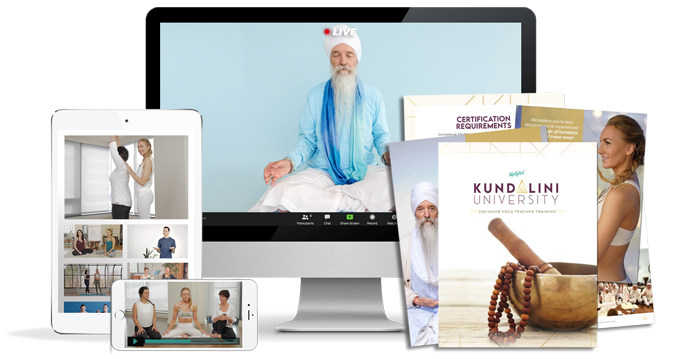
YOU MIGHT ALSO LIKE
- Trauma-Informed Kundalini Yoga: A Heart-Centered Approach to Healing
- Harnessing the Power of Kundalini Divine Feminine for Transformation
- Kundalini for Feminine Energy: Ignite Your Creative Power and Passion
- Mastering the Sufi Grind: Benefits and Techniques for All Levels
- Kundalini Yoga for Chakras: An Uplifted Guide to Energy Balance
- Discover the Benefits of the Gobinday Mukunday Mantra for Well-Being
- Nabhi Kriya: Ignite Your Inner Fire and Personal Power
- Ek Ong Kar Sat Gur Prasad: Kundalini Mantra For Manifestation
- Tantric Har Chant: How It Fuels Prosperity and Inner Power
- Powerful Mantra for Protection Against Negative Energy and Harm
- The Power of Humee Hum Brahm Hum Mantra for Connection and Healing
- The Sa Re Sa Sa Mantra: Connecting Breath, Light, and Creativity
- What Is The Ajai Alai Mantra In Kundalini Yoga?
- What Is Sat Nam Rasayan? How And When To Practice
- The Meaning Of Ang Sang Wahe Guru Mantra in Kundalini Yoga
Get 3 Free Training Vidoes from our Kundalini University Experience & Certification Program


